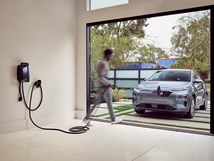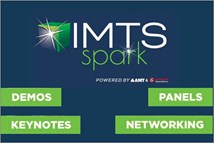Hyundai/Kia to Spend Big on EVs, Mobility
The Korea-based company is making a big commitment. Make that BIG.
#hybrid
Hyundai Motor Group plans to invest $86 billion (100 trillion won) over the next 5 years to develop and launch a range of next-generation vehicles, mobility services, robotics and infrastructure improvements.
The spending spree encompasses the group’s automotive brands (Hyundai, Kia and Genesis), as well as its commercial vehicle unit and other transportation-related ventures.
Global partnerships, such as the autonomous vehicle joint venture formed last year with Aptiv, and “open innovation” across diverse industries are expected to play a big part of the plan.
Accelerating Electrification
Much of the new investment is earmarked for electrification, expanding the Group’s lineup to 44 models, nearly doubling last year’s offering, including:
- 13 hybrids
- 6 plug-in hybrids
- 23 full-electric vehicles
- 2 fuel cell models
The rollout starts this year with hybrid and plug-in hybrid variants of three crossover/SUVs: the Hyundai Tucson and Santa Fe, and Kia Sorento. An all-new EV will be added next year. This will be followed by a dedicated EV architecture in 2024 that Hyundai says will allow it to reduce costs by sharing components across models.
On the fuel cell front, Hyundai is eying applications for everything from cars and commercial vehicles—via a joint venture with Cummins—to trains, forklifts, drones and stationary power systems. Annual deliveries of the hydrogen-powered fleet are forecasted to total more than 200,000 units by 2030. This compares with about 5,000 last year for the fuel cell-powered Hyundai Nexo crossover.
Automation, Air Taxis, Car-Sharing
Hyundai/Kia and supplier affiliate Hyundai Mobis are committing a combined $2 billion in the 50:50 venture with Aptiv. A production-ready Level 4/5 autonomous vehicle platform is targeted by 2022, followed by limited commercial applications a year later. More widespread use is expected by the end of 2024.
Also in the hopper are:
- Air taxis
- Car-sharing through its new L.A.-based MoceanLab unit
- Short-term vehicle subscriptions (launched last year in Russia)
- Expanded collaboration with mobility platform companies, such as Grab (southeast Asia) and Ola (India)
- Smart city technologies
RELATED CONTENT
-
GAC, CATL Partner on Two Battery Ventures
Two new battery ventures are being formed in China by domestic carmaker Guangzhou Automobile Group Ltd. and battery giant Contemporary Amperex Technology Ltd.
-
On Fuel Cells, Battery Enclosures, and Lucid Air
A skateboard for fuel cells, building a better battery enclosure, what ADAS does, a big engine for boats, the curious case of lean production, what drivers think, and why Lucid is remarkable
-
On The Jeep Grand Cherokee, 2022 Nissan Pathfinder, and More
An inside look at the Detroit Assembly Complex-Mack; a innovative approach to waste-free, two-tone painting; why a forging press is like an F1 car; and other automotive developments.








